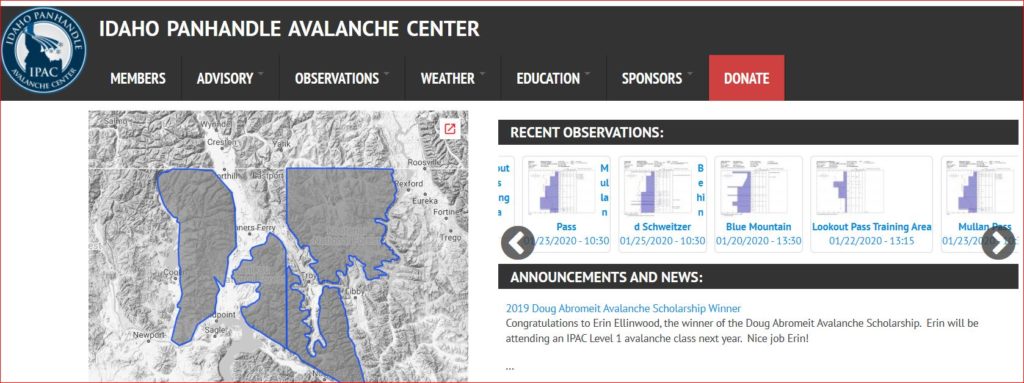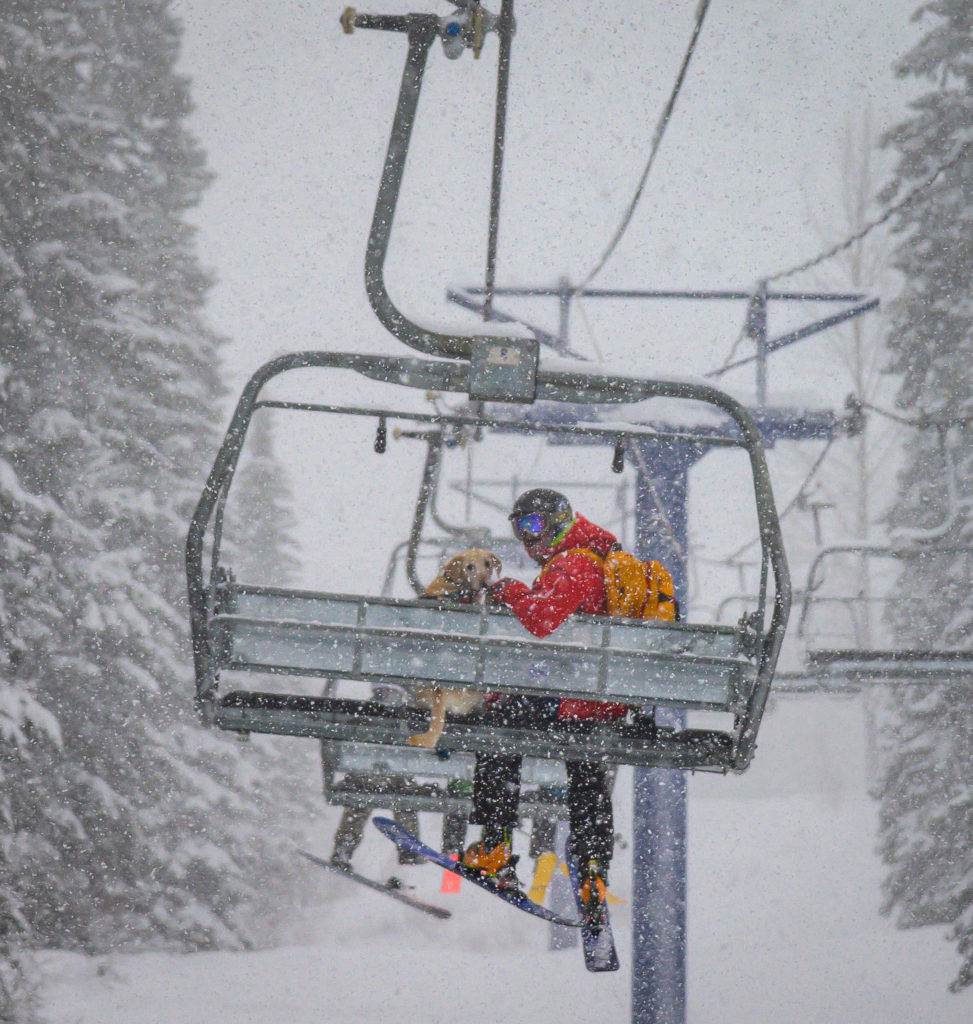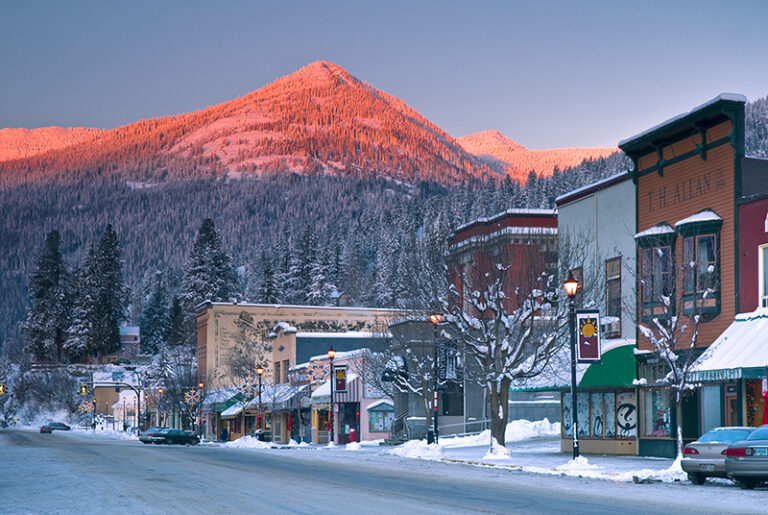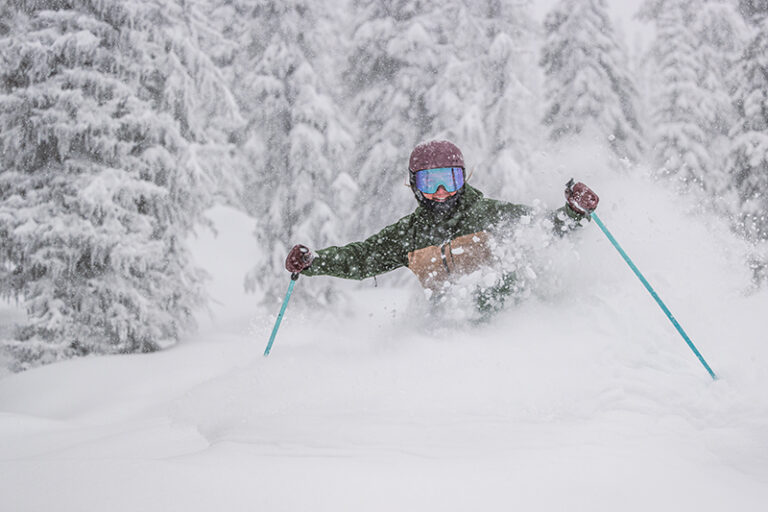By Liam Fitzgerald
Sandpoint, Idaho
As most people know, avalanche fatalities in the U. S. have increased dramatically over the past 30 years. But what many people may not know is that most all avalanche accidents in this country occur on public land administered by the United States Forest Service (USFS) and that avalanches kill more people in our National Forests than any other natural hazard.
The explosion in the number of people venturing into the backcountry to enjoy skiing, snowboarding, or motorized over-snow travel (snowmobiles and snowbikes) has put more and more people at risk of encountering avalanches while pursuing their winter recreational activities. This is corroborated by statistics that show the overwhelming majority of avalanche fatalities in recent years have been snowmobilers and backcountry skiers.
In an attempt to address the growing number of avalanche accidents occurring on public land, the USFS established regional avalanche centers to provide avalanche forecasts for backcountry users, beginning with the Colorado Avalanche Warning Program in the 1970s.
Today, there are 14 avalanche centers in the U.S., most all of them located in western states. Idaho has three, the Sawtooth, Payette, and Idaho Panhandle Avalanche Center, or IPAC, headquartered in Sandpoint.

History of IPAC
Idaho Panhandle Avalanche Center began in the mid-1980s, when two local USFS hydrologists decided to issue notifications to the public when they felt weather conditions were contributing to a widespread avalanche hazard. These announcements were accompanied by intermittent updates of general avalanche conditions through the use of a telephone hotline. In the mid-90s, another USFS hydrologist, Kevin Davis, joined the team and began submitting field data and observations from his backcountry travels in the mountains in and around the Idaho Panhandle. Davis’ contributions led to the development of regular backcountry avalanche forecasts, issued through a USFS website on a weekly basis.
During the next decade or so, IPAC’s popularity continued to grow, and it soon became obvious that in order to keep up with the ever-expanding backcountry community, additional funding was needed. Davis, along with Gary Quinn and Scott Rulander founded Friends of the Idaho Panhandle Avalanche Center, a non-profit organization.
This Friends group’s aims to raise money, that, combined with USFS funding, would keep the center up-and-running. More funds would also provide avalanche education opportunities for the increasing number of winter backcountry enthusiasts. With additional resources provided by the Friends group, IPAC was able to improve its website and notification capabilities and expand its forecast area.
In 2016, Jeff Thompson was hired as Idaho Panhandle Avalanche Center director, and the program continued to evolve. IPAC now issues two forecasts each week for the Selkirk and Cabinet Ranges, and two forecasts for the Silver Valley/St. Regis Basin as well. Along with more frequent and detailed forecasts, IPAC also offers a variety of avalanche courses for backcountry skiers, snowboarders, snowmobilers, and snowbikers, from late fall to early spring.
In 2018, the Kootenai National Forest in northwestern Montana partnered with IPAC to develop a forecast for the mountains of northwestern Montana.

Current Status of IPAC
Today, IPAC is in trouble. USFS budgets in many areas are diminishing. Avalanche centers are under increasing financial stress, with IPAC suffering more than most.
Compared to the Sawtooth Avalanche Center, where 40% of the annual budget comes from the USFS, and the Payette Avalanche Center that is funded 100% by the USFS, IPAC receives less than one-third of its budget from the Forest Service, with the rest coming from the friends group.
In addition, the job of director for both the Sawtooth and Payette centers is a USFS position. Not so with IPAC, where the director’s salary comes from the Friends of IPAC group. To make matters worse, the $21,500 the Sandpoint Ranger District provided IPAC this year may not be available in 2021.
If things continue in this direction, it’s likely that next year there will only be three IPAC forecasters — all USFS employees, working under fairly restrictive time constraints. Additionally, there will be one forecaster from the Kootenai Forest. Altogether, these four will be responsible producing backcountry avalanche forecasts covering an area of roughly 2,500 square miles. Those forecasts may also be reduced to one per week. This will be a big step backwards.
On the national level, the USFS is committed to sustaining regional avalanche centers, but the day-to-day, year-to-year operations of those centers is left up to forest supervisors and district rangers. For some of them, avalanche centers are not a high priority.
If any of the USFS employees who currently make up the forecast staff should be reassigned elsewhere, the center would be in dire straits and likely have to curtail regular operations. To a rapidly growing backcountry community, this would be a significant loss.
But the avalanches won’t care, not one bit. They will continue to occur wherever and whenever they choose, with no regard whatsoever as to whom they might be affecting.
Without regular IPAC forecasts to help us make sound, informed decisions, and to help us safely maneuver in and around avalanche terrain, the North Idaho backcountry is likely to become a little more dangerous, and that’s something that none of us need.
Liam Fitzgerald is a retiring board member of Friends of Idaho Panhandle Avalanche Center.













